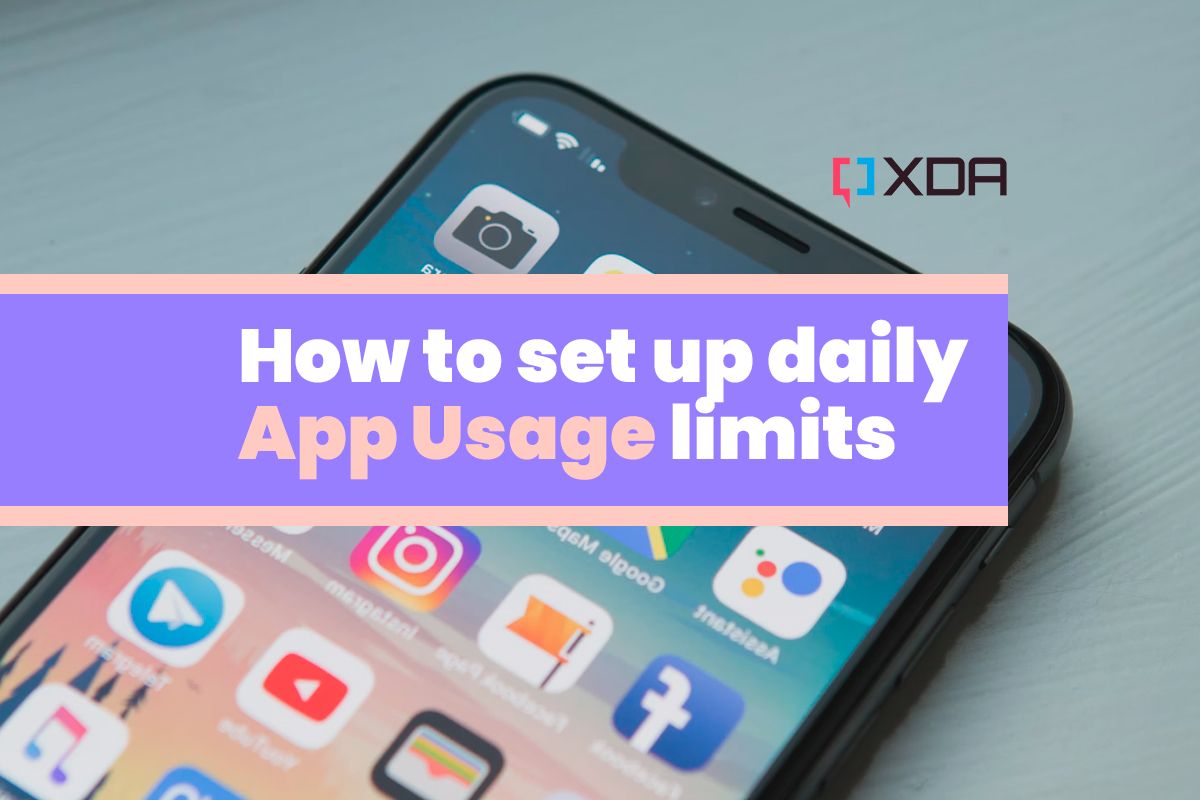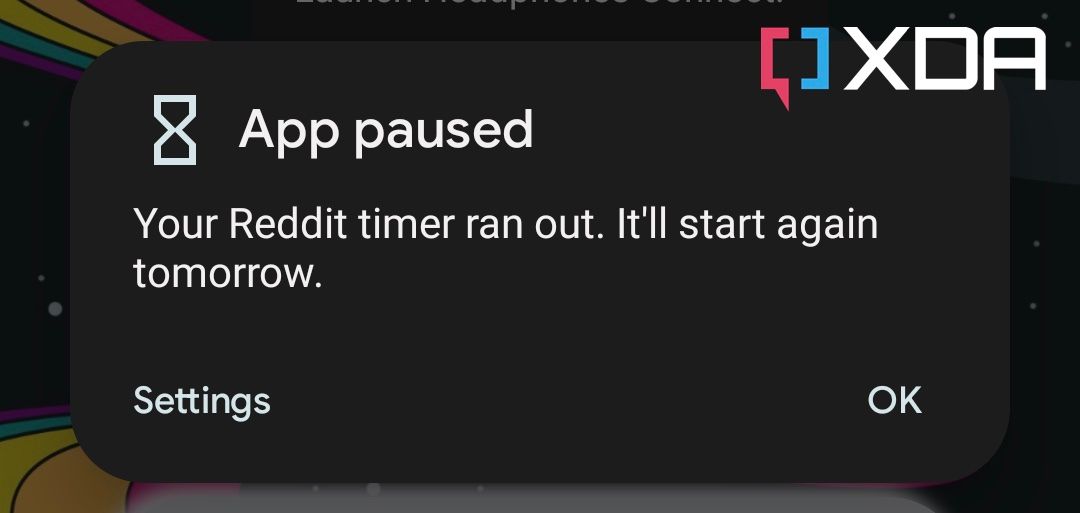Quick Links
Smartphones have evolved a lot over years, and they're more powerful than ever. You now have access to millions of applications at your fingertips that let you do almost everything from watching your favorite movies and TV shows, playing your favorite games, talking to friends and family, and even ordering food. But this also means we're now glued to our smartphones more than ever, which is taking a toll on both our mental and physical health.
Thankfully, both iPhones and Android phones now come with tools to help you take control of your digital wellbeing, and track your daily smartphone usage. In fact, you can also set daily app usage limits on both platforms to limit your day-to-day smartphone usage. If you're struggling to keep your smartphone usage in check and are wondering how to keep yourself from endlessly scrolling your Instagram feed, then follow these simple steps to set app usage limits on both Android and iOS.
The steps involved in setting app usage limits on both Android and iOS are different, so we'll go over them individually. The steps mentioned for Android can be used on both Android phones and Android tablets. Similarly, the steps mentioned for iOS can be used on both an iPhone and an iPad. In fact, Apple's integration is so good that it'll automatically carry over the usage limits you set on your phone to all the applicable devices that are linked to your account. For example, the app timer you set for the Facebook app on your iPhone will automatically carry over to iPad and Mac too.
How to set up daily app usage limits on Android via Digital Wellbeing
Android makes it very to set app timers on your phone via Digital Wellbeing. You'll find the Digital Wellbeing options in your phone's Settings page or it may ship as a pre-installed application on your phone. Either way, here's how to set up daily app usage limits on Android using Digital Wellbeing:
- Head over to the Settings app on your Android phone and scroll down till you find Digital Wellbeing.
- Tap on it, and you will see your app usage stats here. This tells you things like how much time you've spent on each app, how many notifications you received, and more.
- Scroll down and select the Dashboard option to get a more detailed view of the same.
- Now, choose an app from the list to open a detailed view for it along with options to set a timer, manage notifications, and more.
- Select the App timer to open a floating window in which you can set the timer.
You are free to choose how much time you want to spend on a particular app. If you set a 30 minutes timer, for instance, the phone will only allow you to spend 30 minutes on that particular every day. Trying to open the app after the timer runs out will trigger the prompt shown in the screenshot below:
You can go back to the Digital Wellbeing settings and remove the timer for that app if you really have to use that particular app for emergency reasons.
How to set up daily app usage limits on iOS via Screen Time
Apple introduced the Screen Time feature Apple with iOS 12 to keep track of your screen usage as you use your phone throughout the day. Just like Digital Wellbeing on Android, you can use Screen Time to set app limits on your iPhone or iPad. Here's how you can do it:
- Open the Settings app on your iPhone and scroll down till you find Screen Time.
- Tap on it to see the amount of time you've used your phone. You can tap on the See All Activity option to get detailed info about per-app usage.
- To set usage limits for apps, tap on the App Limits option and then select Add Limit.
- You will now see all your apps categorized based on their utility. Select the relevant category and the app you want to set a limit for. You can also set limits for websites.
- Choose the duration for which you want to set the timer. You can also select the app limit to recur on certain days of the week, like over the weekend.
- You can repeat this step for any number of apps you want.
- Once the timer is set, you can continue using the apps normally. If you launch an app after you've already used it for the stipulated time, you will get a prompt saying you've reached your limit on the app. You can then tap on OK or snooze the timer by choosing the Ignore Limit option. Don't do this though, as it beats the entire purpose of setting the limit.
And that's how you set app timers on Android and iOS. Congrats on taking the first step toward curbing your smartphone addiction! It may not look like a lot, but setting app timers will help you a lot over time provided to don't ignore them and continue using the apps. As long as you don't do that, you'll see your screen time reduce when you see the next report.


